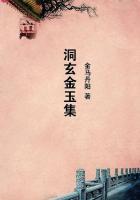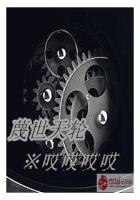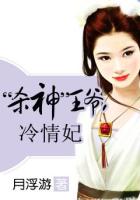Whey, once separated, does not thicken, as the milk did, but boils away like water. Sometimes, however, there is little or no cheese in milk, and such milk is not nutritive and is more like water. The case of blood is similar: cold dries and so solidifies it. Those kinds of blood that do not solidify, like that of the stag, belong rather to water and are very cold. Hence they contain no fibres: for the fibres are of earth and solid, and blood from which they have been removed does not solidify. This is because it cannot dry; for what remains is water, just as what remains of milk when cheese has been removed is water. The fact that diseased blood will not solidify is evidence of the same thing, for such blood is of the nature of serum and that is phlegm and water, the nature of the animal having failed to get the better of it and digest it.
Some of these bodies are soluble, e.g. natron, some insoluble, e.g. pottery: of the latter, some, like horn, can be softened by heat, others, like pottery and stone, cannot. The reason is that opposite causes have opposite effects: consequently, if solidification is due to two causes, the cold and the dry, solution must be due to the hot and the moist, that is, to fire and to water (these being opposites): water dissolving what was solidified by fire alone, fire what was solidified by cold alone. Consequently, if any things happen to be solidified by the action of both, these are least apt to be soluble. Such a case we find where things have been heated and are then solidified by cold. When the heat in leaving them has caused most of the moisture to evaporate, the cold so compacts these bodies together again as to leave no entrance even for moisture.
Therefore heat does not dissolve them (for it only dissolves those bodies that are solidified by cold alone), nor does water (for it does not dissolve what cold solidifies, but only what is solidified by dry heat). But iron is melted by heat and solidified by cold. Wood consists of earth and air and is therefore combustible but cannot be melted or softened by heat. (For the same reason it floats in water-all except ebony. This does not, for other kinds of wood contain a preponderance of air, but in black ebony the air has escaped and so earth preponderates in it.) Pottery consists of earth alone because it solidified gradually in the process of drying. Water cannot get into it, for the pores were only large enough to admit of vapour escaping: and seeing that fire solidified it, that cannot dissolve it either.
So solidification and melting, their causes, and the kinds of subjects in which they occur have been described.
8
All this makes it clear that bodies are formed by heat and cold and that these agents operate by thickening and solidifying. It is because these qualities fashion bodies that we find heat in all of them, and in some cold in so far as heat is absent. These qualities, then, are present as active, and the moist and the dry as passive, and consequently all four are found in mixed bodies. So water and earth are the constituents of homogeneous bodies both in plants and in animals and of metals such as gold, silver, and the rest-water and earth and their respective exhalations shut up in the compound bodies, as we have explained elsewhere.
All these mixed bodies are distinguished from one another, firstly by the qualities special to the various senses, that is, by their capacities of action. (For a thing is white, fragrant, sonant, sweet, hot, cold in virtue of a power of acting on sense). Secondly by other more characteristic affections which express their aptitude to be affected: I mean, for instance, the aptitude to melt or solidify or bend and so forth, all these qualities, like moist and dry, being passive. These are the qualities that differentiate bone, flesh, sinew, wood, bark, stone and all other homogeneous natural bodies. Let us begin by enumerating these qualities expressing the aptitude or inaptitude of a thing to be affected in a certain way. They are as follows: to be apt or inapt to solidify, melt, be softened by heat, be softened by water, bend, break, be comminuted, impressed, moulded, squeezed; to be tractile or non-tractile, malleable or non-malleable, to be fissile or non-fissile, apt or inapt to be cut;to be viscous or friable, compressible or incompressible, combustible or incombustible; to be apt or inapt to give off fumes.
These affections differentiate most bodies from one another. Let us go on to explain the nature of each of them. We have already given a general account of that which is apt or inapt to solidify or to melt, but let us return to them again now. Of all the bodies that admit of solidification and hardening, some are brought into this state by heat, others by cold. Heat does this by drying up their moisture, cold by driving out their heat. Consequently some bodies are affected in this way by defect of moisture, some by defect of heat:
watery bodies by defect of heat, earthy bodies of moisture. Now those bodies that are so affected by defect of moisture are dissolved by water, unless like pottery they have so contracted that their pores are too small for the particles of water to enter. All those bodies in which this is not the case are dissolved by water, e.g. natron, salt, dry mud. Those bodies that solidified through defect of heat are melted by heat, e.g. ice, lead, copper. So much for the bodies that admit of solidification and of melting, and those that do not admit of melting.
The bodies which do not admit of solidification are those which contain no aqueous moisture and are not watery, but in which heat and earth preponderate, like honey and must (for these are in a sort of state of effervescence), and those which do possess some water but have a preponderance of air, like oil and quicksilver, and all viscous substances such as pitch and birdlime.
9

